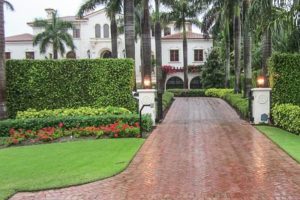The Evolution of Energy-Efficient Building: The Birth of Passive House
In 1988, two physics professors, Bo Adamson from Lund University in Sweden and Wolfgang Feist from the Institut für Wohnen und Umwelt in Germany, began exploring ways to enhance energy efficiency in building construction. They delved into research from the 1970s, which suggested the possibility of constructing low-energy buildings using passive solar technologies to maintain comfortable indoor temperatures with minimal energy for heating or cooling.
They introduced the term “Passivhaus” to describe this concept. As this idea gained traction in English-speaking countries, it became known as “Passive House.” This approach significantly changed how architects, construction engineers, and builders viewed energy efficiency in residential, commercial, and institutional buildings.
As Feist later explained, “Passive House is a building standard that is truly energy efficient, comfortable, and affordable. It is not a brand name but a proven construction concept that can be applied anywhere by anyone.”
The Impact of Passive House on Energy Efficiency
Energy efficiency is a hot topic for homeowners, builders, and architects due to its implications on fossil fuel availability and costs. Passive House construction has emerged as a solution, offering significant benefits:
Passive House Benefits
- Significant Energy Savings: Passive Houses can achieve up to 90% savings in energy for heating and cooling compared to conventional buildings and over 75% compared to new builds. They use less than 1.5 liters of oil or 1.5 cubic meters of gas per square meter annually, much less than typical “low-energy” buildings. Even in warm climates requiring active cooling, Passive Houses demonstrate vast energy savings.
- Efficient Use of Natural Heat: These buildings leverage the sun, internal heat sources, and heat recovery, eliminating the need for conventional heating systems even in winter. Passive cooling techniques, like strategic shading, keep them cool in summer.
- High Comfort Levels: Passive Houses maintain consistent internal temperatures, regardless of external conditions, thanks to special windows and a highly insulated building envelope. This includes the roof, floor slab, and exterior walls.
- Superior Air Quality: A ventilation system provides constant fresh air without drafts, and a highly efficient heat recovery unit reuses heat from exhaust air.
The Five Principles of Passive House
- Continuous Insulation: A thermal barrier wraps the building, maintaining warmth in winter and coolness in summer.
- No Thermal Bridges: Construction details are meticulously handled to prevent heat or cold from bypassing the thermal barrier.
- Airtight Construction: An airtight construction acts as a “windbreaker,” stopping air penetration.
- High-Performance Windows and Doors: These elements must be airtight, thermally broken, and insulated to manage solar gain.
- Fresh Air Ventilation with Heat Recovery: These systems ensure clean air and energy efficiency.
Brick Construction Meets Passive House Design
Historically, brick has been valued for its durability, low maintenance, and classic appearance in various buildings. Its insulation value, due to its thermal mass, makes it a favored construction material. Thermal mass refers to a material’s ability to absorb and store heat, which is particularly effective in climates with fluctuating temperatures.
For example, in the Southwest US, during August, a brick wall will slowly heat up, but the interior side will never reach the day’s peak temperature, thanks to the “dampening effect” and “thermal lag.” This means less powerful air-conditioning is needed, saving money.
The thermal mass of fired clay brick, combined with the space between exterior and interior walls, provides the continuous insulation crucial for Passive House construction, making it a key component in energy efficiency.
Conclusion: A Blend of Tradition and Innovation
The drive for energy conservation has spurred creative thinking among construction engineers. Passive House standards, while relatively new, are gaining deserved attention. Brick, a material with a long history of providing shelter, aligns perfectly with these modern standards. In the case of Passive House and brick, everything old is indeed new again.

